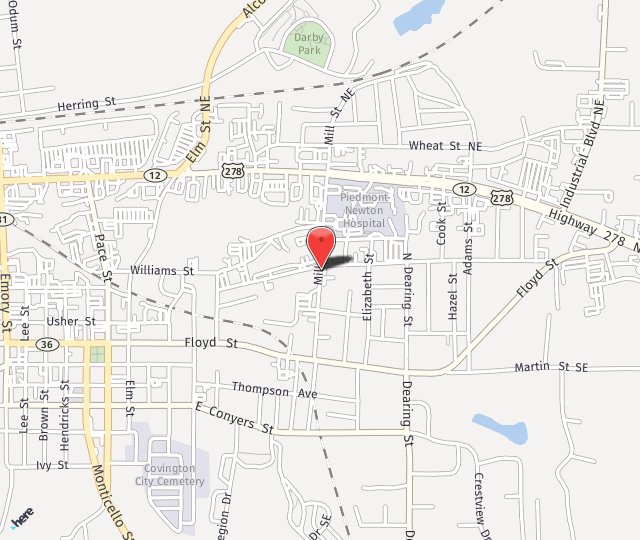About 64.7 million American adults have periodontitis – advanced gum disease. It is the leading cause of tooth loss in adults in our country. With a dental bone graft procedure, Dr. Venitress Carrington helps patients in the Covington, GA area keep their teeth, oral health, and happy smiles.
Losing teeth to gum disease
Gum disease is a soft tissue infection, but it has far-reaching effects.
Hundreds of strains of bacteria live in your mouth. These organisms flourish in the warm, moist environment, doubling their population about every five hours as they feast on sugars and starches in bits of food left behind by your meals. Some oral bacteria assist in breaking foods down for more efficient digestion. Thus, a sterile mouth isn’t the goal. Rather, we strive to maintain a balance with diligent brushing and flossing. However, ineffective hygiene, pregnancy, diabetes, or smoking can disrupt healthy oral harmony, allowing pathogens to overpopulate.
As harmful bacteria eat, they excrete acidic waste that inflames gum tissue. They protect themselves in a sticky biofilm of plaque that also traps food particles. If plaque is not removed frequently with good daily oral hygiene, it hardens at the gum line. This tartar irritates soft tissues even more. Gums pull away from teeth, forming periodontal pockets that create more ideal breeding and feeding grounds for bacteria. They penetrate deeper, breaking down ligaments that hold teeth in place. Bacteria trigger tooth decay on unprotected root surfaces, and toxins eventually dissolve bone around teeth.
Without treatment, teeth loosen and must be extracted, or simply fall out.![]()
What about dental implants?
Dental implants are the best solution currently available for tooth loss – the closest replacement to a natural tooth. However, despite modern advances in materials and techniques, we cannot improve upon nature. In keeping with a philosophy of conservative dental care, Dr. Carrington urges patients to consider methods of saving their own teeth, including a bone graft.
How can a bone graft save a tooth?
Grafting is essentially regenerating bone destroyed by the attack of gum disease. It restores natural structure that supports a tooth, potentially avoiding tooth loss or the need for extraction. Bone grafting also helps to maintain bone structure after an extraction, making a dental implant possible for the patient who otherwise would not have sufficient bone. In addition, facial bone supports muscles and skin. Bone loss contributes to a sunken, prematurely aged appearance with perioral lines and wrinkles. A bone graft helps to maintain a fuller, more youthful cosmetic appearance.
We’re Here to Help
or
Low-trauma procedure
![]() Dr. Carrington is trained and experienced in the procedure, offering bone grafts in-house – without referral to an oral surgeon. She understands that patients feel more comfortable in familiar surroundings, receiving care from the dental team they know and trust. Nonetheless, if you are nervous about having a bone graft, the doctor will talk with you about a mild, calming sedative to relax you for the appointment.
Dr. Carrington is trained and experienced in the procedure, offering bone grafts in-house – without referral to an oral surgeon. She understands that patients feel more comfortable in familiar surroundings, receiving care from the dental team they know and trust. Nonetheless, if you are nervous about having a bone graft, the doctor will talk with you about a mild, calming sedative to relax you for the appointment.
The bone graft procedure is pre-planned for precision; thus, rather brief in execution. Each case is unique, but here are the general steps:
- Examination and consultation – Dr. Carrington examines your mouth thoroughly, and gathers information about your health history. She takes precise measurements; low-radiation digital x-rays; and three-dimensional, high resolution panoramic images. This assessment lets her determine if you are a suitable candidate and to plan the bone graft.
- On the day of your appointment, your mouth is numbed to ensure your comfort.
- Dr. Carrington makes a small incision, and carefully folds back a little gum tissue.
- Harmful bacteria are removed, and the site is sterilized.
- Grafting material is placed at the bone. There are several options, including bovine (cow), cadaver, and synthetic bone. However, the doctor usually prefers granular bone, a purified material obtained from a tissue bank.
- In some cases, guided tissue regeneration is recommended. A bit of mesh is placed between the bone and gum. It prevents soft tissue from filling in the space, allowing grafting to take place.
- The incision is closed with a few sutures.
- Over the course of several months, bone fuses with grafting material, augmenting the height and width of bone.
Schedule a consultation with Dr. Carrington to find out if dental bone graft can save your teeth. The number in Covington, GA is (770) 786-2754.


